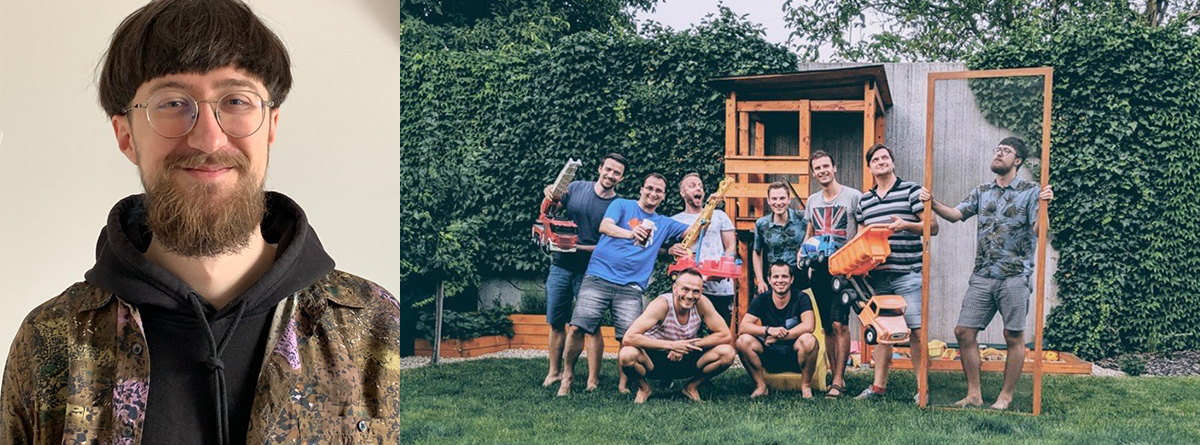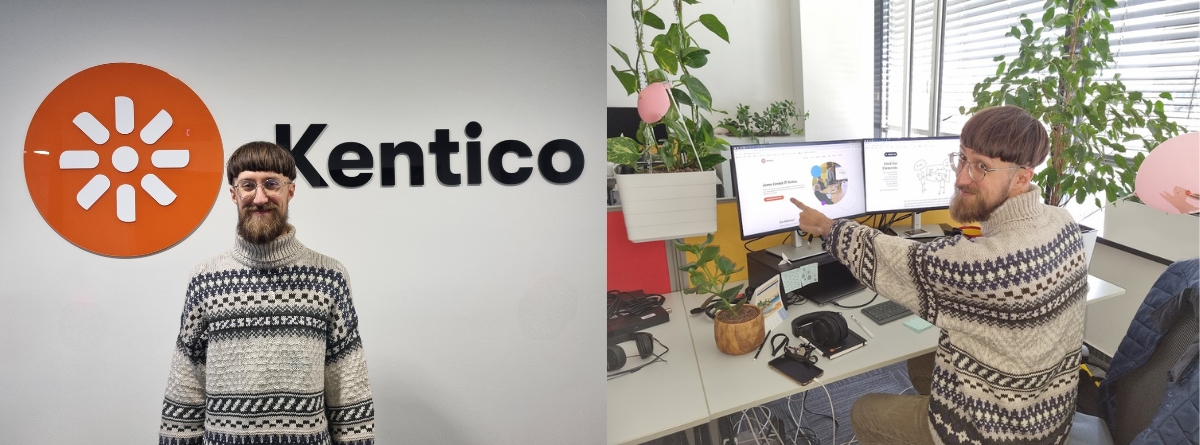Matúš Kropuch has grown professionally at Kentico. From a QA Engineer and a Developer to the newly established position of an Engineering Manager (EM). "While studying at the Faculty of Informatics, I was organizing the Film Festival and lecturing at workshops. I enjoy working with people more than software development itself," he says.
What does an Engineering Manager do?
The main job of an EM is to maximise the team's performance. Everyone needs to get the right information at the right time, have the tools to work efficiently, and most importantly have a safe and supportive work environment. We don't want to squeeze our colleagues dry, quite the opposite!
What is important is that the Engineering Manager is able to choose smart tactics based on what their people need most at the time. Sometimes it's aligning priorities, changing the environment, sometimes clarifying minor technicalities, another day resolving conflicts. You can't do without great deal of empathy.
As Matúš says: "The EM job is ideal for IT graduates who also enjoy leadership and working with people. They have technical knowledge and understand development, but they are also empathetic and communication-savvy."

Why we introduced the position of Engineering Manager at Kentico.
The reason is to untie the hands of Technical Leaders and to systematically nurture the team members' career growth. Matúš notes: "It's essential to provide the team with enough professional care—someone who is there for their colleagues, developing them, but who also genuinely understands their work. The EM also tackles the daily operational nitty-gritty, such as coordinating attendance and leave."
"Sitting at a computer doesn't do it for me. I much prefer working with people. Every day is completely different in this job."
Eight main challenges.
We have tried out various options to provide the teams with the support and guidance they needed. From Scrum Masters, who helped Developers organize their own work and follow agile rituals, to Tech Leads, who added people management, we have worked our way right up to Engineering Managers.
Each of them focuses on slightly different areas—it depends on the team and the personality. This is the shared framework for their work:
Team performance.
"I help set up what the team is working on so that the Developers can focus on the technical side of the project. I prioritize and communicate all changes towards both the development and management."
Increasing team effectiveness.
"It's essential for the people on the team to get to know each other well, be able to communicate with each other, and grow professionally. Because only then the product naturally evolves as well."
Professional development of the team.
"Every single person brings value. And when they have the information, resources, and room to grow to make the best use of their skills, the value is all the greater. I encourage autonomy and provide honest feedback."
"We have great people who can make independent, informed decisions based on precise data."
Ensuring a safe climate and work-life balance.
"People need to feel comfortable working as part of a team. But sometimes it's easy to get completely consumed by programming, especially when we actually enjoy our jobs. I don't want my colleagues to burn out—we need to look after ourselves too. If someone is at work too long, I just send them home."
Diversity and inclusion in the team.
"I'm glad Kentico considers this an important topic, it's close to my heart. At the team level, as soon as I feel a hint of discomfort or hostility, I immediately address the issue, give feedback, we talk about it."
Recruitment and offboarding.
"I am actively involved in recruitment, I discuss the potential candidates with the Recruiter, I am involved in their selection, placement and training as well. And when it's time to say goodbye, I offer fair feedback."
Effective functioning of development teams.
"I make sure the tools and processes are as efficient as possible. And I change them flexibly whenever necessary."
"For example, the Retrospective is a tool for the team to regularly reflect together on what worked, what didn't, and what lessons to learn. However, sometimes the team gets stuck and can't agree. That's when I replace the Retrospective with a series of face-to-face meetings instead. Afterwards, we'll have a sync, discuss everything together again. I'll just use the same tool, just in a different format. The important thing is to adapt the tools and processes to achieve the goal."
Implementing mechanisms for continuous improvement.
"Feedback, Retrospectives, individual meetings...—I'm in charge of the processes that help us improve."

What's the difference between Engineering Manager, Scrum Master, and Technical Leader?
Let's begin with what these three roles have in common—they are largely responsible for the team and the people in it. However, each role takes on this task from a different angle.
An Engineering Manager is the person with the technical background and product insight. He or she is able to prioritize and support the team from both the development and genuinely personal side.
A Technical Leader, on the other hand, is an ultra-technical role. These top Developers build deep knowledge within a sub-domain of our product over a long period of time. And from their position as experts, they decide how the product will evolve technically, what architecture we will apply. They also help others expand their professional skills.
A Scrum Master does not need to have an IT background. S/he mainly focuses on the organization of the team, the flow of ceremonies and the proper implementation of processes in the team.
What support do Engineering Managers receive?
EMs report to Rocky, our VP Engineering. He meets with everyone for at least an hour once every fortnight. They discuss all the issues they're facing and how things are going in the teams. Together, they look for the best ways to solve any problems and validate each other's decisions.
In addition to these syncs, they pay close attention to Small Improvements—a quarterly evaluation of themselves, their supervisor and the company.
"Rocky always lends a helping hand. He also gives us a lot of space and motivates us to make autonomous decisions."
There are four Engineering Managers at Kentico today—Matúš, Jana, Jarda, and Kamil. Would you like to join them? Check out the open positions.
More articles in this category
A year of change: Kentico CEO Dominik Pintér on Milestones, Mindset and What's Ahead in 2026
The year 2025 was marked by real-world AI adoption, a strong focus on strategy and key milestones in product evolution. In this interview, our CEO Dominik Pintér reflects on a t...
A Decade of Partnerships: Petr Klouda on Shaping Kentico’s Global Partner Network
From sales to strategic connections, Petr Klouda has spent the past 10 years shaping how we work with our partners to help them thrive with Kentico. As our VP of Partnership, Pe...
Empowering growth: Ivanka’s journey at Kentico and her mentorship for women in business
In honor of Women’s Equality Day, we’re spotlighting Ivanka, our dynamic Business Development leader and active mentor in the Femme Palette community. Her story highlights her t...